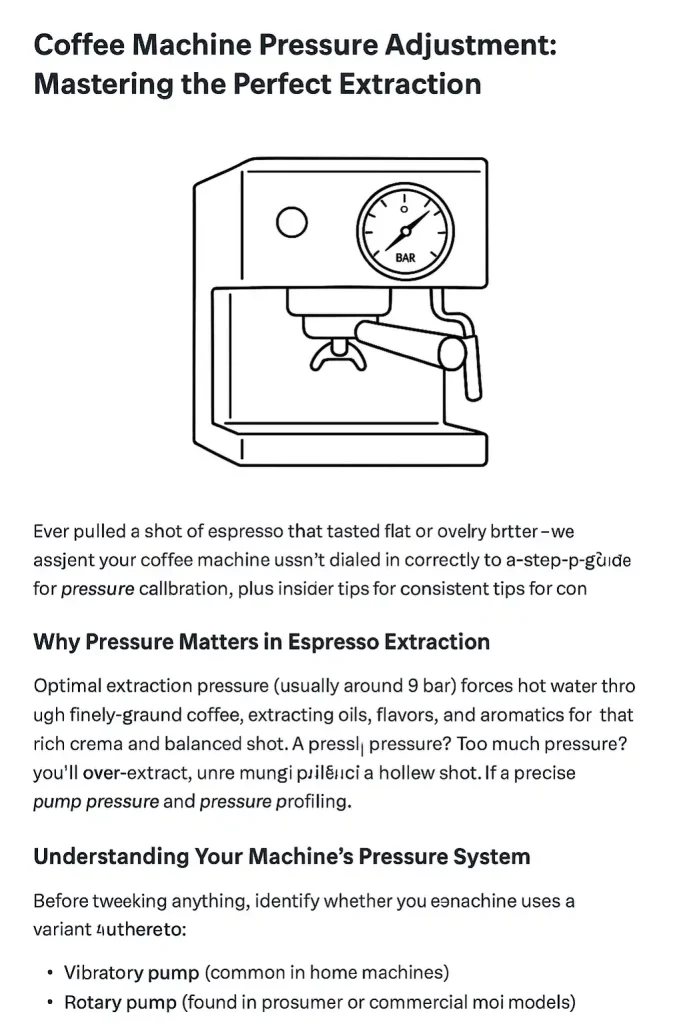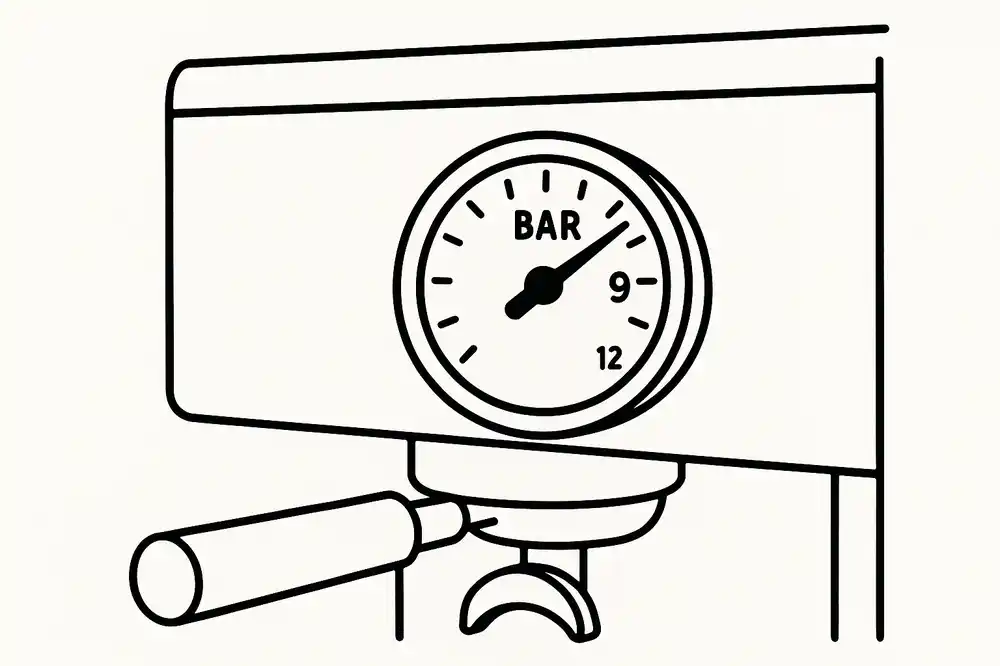Ever pulled a shot of espresso that tasted flat or overly bitter? Chances are your coffee machine pressure wasn’t dialed in correctly. Adjusting the pressure on your espresso machine is one of the simplest—and most impactful—ways to level up your home brewing game. In this post, we’ll cover everything from why espresso machine pressure matters to a step-by-step guide for pressure calibration, plus insider tips for consistent results.
Why Pressure Matters in Espresso Extraction
Optimal extraction pressure (usually around 9 bar) forces hot water through finely-ground coffee, extracting oils, flavors, and aromatics for that rich crema and balanced taste. Too little pressure leads to under-extraction—sour, thin espresso. Too much pressure? You’ll over-extract, ending up with a bitter, hollow shot. A precise pump pressure and pressure profiling can make all the difference in your morning cup.

Understanding Your Machine’s Pressure System
Before tweaking anything, identify whether your espresso machine uses a:
- Vibratory pump (common in home machines)
- Rotary pump (found in prosumer or commercial models)
- PID controller or manual pressure regulator
Most machines include a built-in pressure gauge on the brew group or near the portafilter. If yours doesn’t, consider adding an external gauge or upgrading to a machine with a manometer for precise readings.
Step-by-Step Guide to Pressure Adjustment
Follow these steps to calibrate your brew pressure:
- Warm up your machine for 10–15 minutes. Stability is key.
- Lock in a dose of coffee—aim for 18–20 g in a double basket.
- Attach the portafilter and start the pump. Watch the pressure gauge—it should climb quickly to around 9 bars.
- If pressure is off by more than ±0.5 bar, locate your pressure adjustment screw or regulator valve (usually near the pump or boiler).
- Use a screwdriver to turn the screw clockwise to increase pressure or counter-clockwise to decrease it—make very small adjustments (¼ turn at a time).
- Run another test shot, aim for a 25–30 s extraction time, and adjust grind size if needed.
- Record your settings: pump speed, adjustment screw position, and grind setting for future reference.

Pro Tips for Consistent Coffee Machine Pressure
- Clean your group head and portafilter regularly to avoid flow restrictions that can skew your pressure readings.
- Use a precision pump or digital PID controller for advanced pressure profiling—ramping pressure up or down during extraction.
- Monitor water temperature: fluctuations can affect viscosity and perceived pressure.
- Check for leaks in gaskets or hoses; even small leaks lower brew pressure unexpectedly.
- Keep a dialed-in grind—it’s as important as your target pressure for balanced extraction.
Frequently Asked Questions (FAQ)
1. What is the ideal pressure for an espresso machine?
Most baristas aim for 9 bars of pressure. You can experiment between 8.5–9.5 bars depending on coffee origin and roast level.
How often should I adjust my machine’s pressure?
Once you’ve set your baseline, monthly checks are fine—more often if you notice taste inconsistencies or after changing your coffee bean source.
Can I damage my machine by over-adjusting pressure?
Yes—excessive pressure can strain your pump, damage seals, and even cause boiler issues. Always make small adjustments and monitor performance.
Do I need professional tools to adjust pressure?
A good screwdriver and a reliable pressure gauge are usually all you need. Prosumer machines may require specialized wrenches or calibration tools.
Final Thoughts
Mastering your coffee machine pressure adjustment is a blend of art and science. With patience, precise gauge readings, and consistent cleaning routines, you’ll pull café-quality shots from home—every single time. Ready to tweak your pressure? Grab your screwdriver, warm up the machine, and let’s brew!